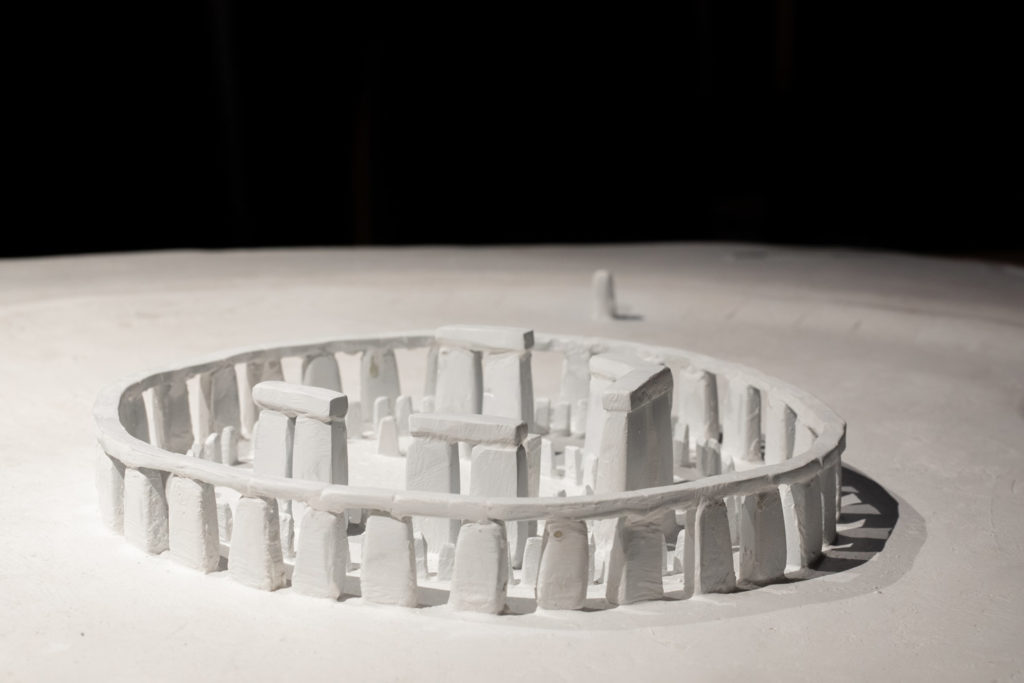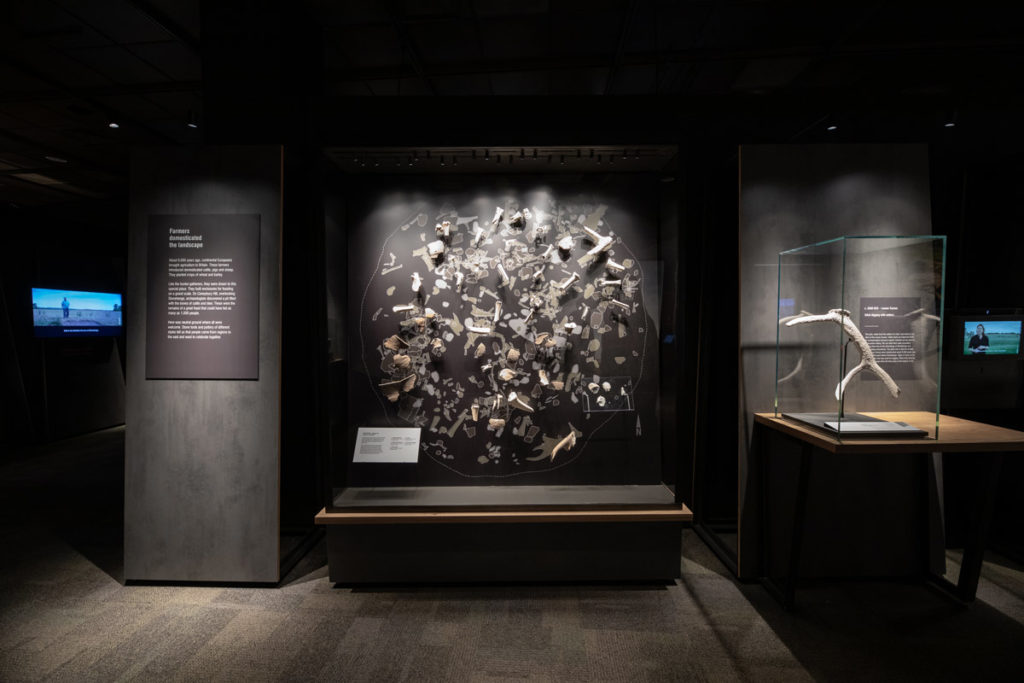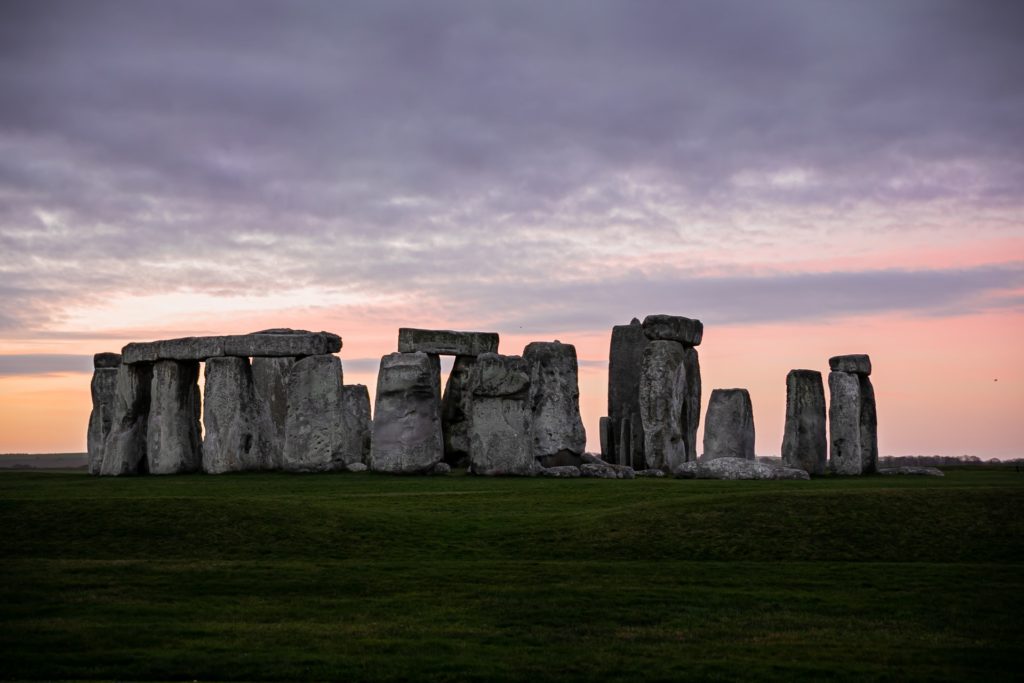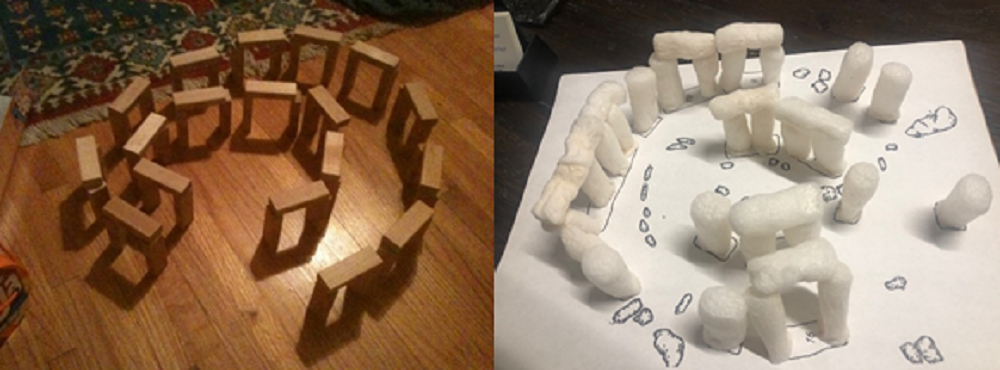
“But, nobody knows…nobody knows”. This is the refrain from my brother who sits across from me as we sip pre-brunch cocktails. The topic of discussion, you ask? The new special exhibit Stonehenge: Ancient Mysteries and Modern Discoveries at HMNS. It prompts a memory that he clearly finds rather amusing. According to him, “…but nobody knows” is a common refrain one hears while listening to the audio-guide provided for the walking tour of the actual Stonehenge site. As he continues to talk, it occurs to me that it’s true, nobody really does know. I mean, of course we know “things,” but the larger picture is still a mystery. What purpose this ancient megalithic site may have served and how in the world they were able to construct it are two questions to which we have only partial answers, at best.
Now, don’t get me wrong, there is no shortage of hypotheses on these matters, and they range from the plausible to the utterly absurd. Two of the current front runners for what Stonehenge’s purpose was are: it was a place for scientific observation or it was a place of religious pilgrimage/ancestor worship. Interestingly enough, both camps base their ideas on the fact that Stonehenge was clearly constructed with celestial influence in mind. This fact is more or less undeniable, as there are clear alignments with both the sun and the moon during specific times of the year. When considering these two scenarios, my first thought is, “Why not both?” I have always struggled to understand why mysteries have to have either/or explanations. Life is complicated. I mean, I use my car to drive places, but it is also a handy place to keep all my junk. I’m kidding, of course, but you get the point.

My dual-purpose premise is supported by a recent paper, published by a team of researchers from Cardiff University. The paper asserts that Stonehenge was the site of an epic barbecue thousands of years ago and by judging from the copious amount of pig bones left behind, there was enough food to feed an army. Isotopic analysis of the bones revealed that the pigs came from all across ancient Britain, indicating that pre-historic man was much better at pitching in food for a barbecue than many of my friends. A small hypotheses of my own based on scientific observation, of course. Researchers think that this social gathering and rib eating fest was likely held around the Autumnal Equinox either before or after the harvest, which would support the idea that the site was a place of social gathering as well as a site to mark important celestial events.
What fascinates me even more than the idea of “pre-historic block parties” is wondering how in the world they were able to build this megalithic monstrosity. Unsurprisingly, a range of ideas exist for this as well, some good, some bad and some just plain ridiculous. One of the more fanciful ideas is that Merlin, of Arthurian legend, transported and erected the stones using his “powerful magic.” I am suspect of this idea, but what I do know is that a construction this enormous took a lot of people, pre-planning and organization. While the site was built in stages, over thousands of years, erecting these giant stones was clearly the apex moment of what appears to be an enormous work in progress.

As ridiculous as the “Merlin hypotheses” is, the idea that these gigantic stones were moved, in some instances hundreds of miles, using only simple machines and brute force almost defies belief as well. Once these mammoth stones were on site, each was dressed using stone hammers and then fitted with tongue-in-grove joints so they fit together almost perfectly, somewhat like LEGO® bricks. Many years ago I stumbled across a cartoon that I think illustrates the herculean effort that went into the construction of Stonehenge by breaking it down in a way that modern people can understand. The frustration of putting together IKEA furniture is nothing compared to dragging 25-ton rocks, on average, across the Salisbury Plains, but it is a fun way to look at it.
Regardless of the truth, I believe some things are more interesting when they remain a mystery of sorts. Over the years I have taught many classes to schoolchildren on the magic and mystery of Stonehenge which has resulted in the construction of 100s of miniature Stonehenge models, all built from cornstarch packing peanuts. My own daughter was so taken by the stone circle that I came home one evening to find a miniature Jenga-block model on my bedroom floor. Whatever the correct answers may be, we will likely never know with certainty, and I for one, like it that way. However, what is certain is that Stonehenge will continue to excite wonder in people of all ages for many years to come.

Be sure and visit the Houston Museum of Natural Science to take your own trip through the wonders of Stonehenge: Ancient Mysteries and Modern Discoveries.

